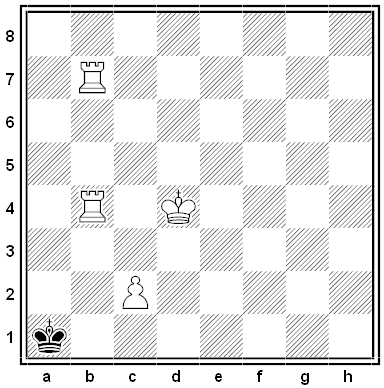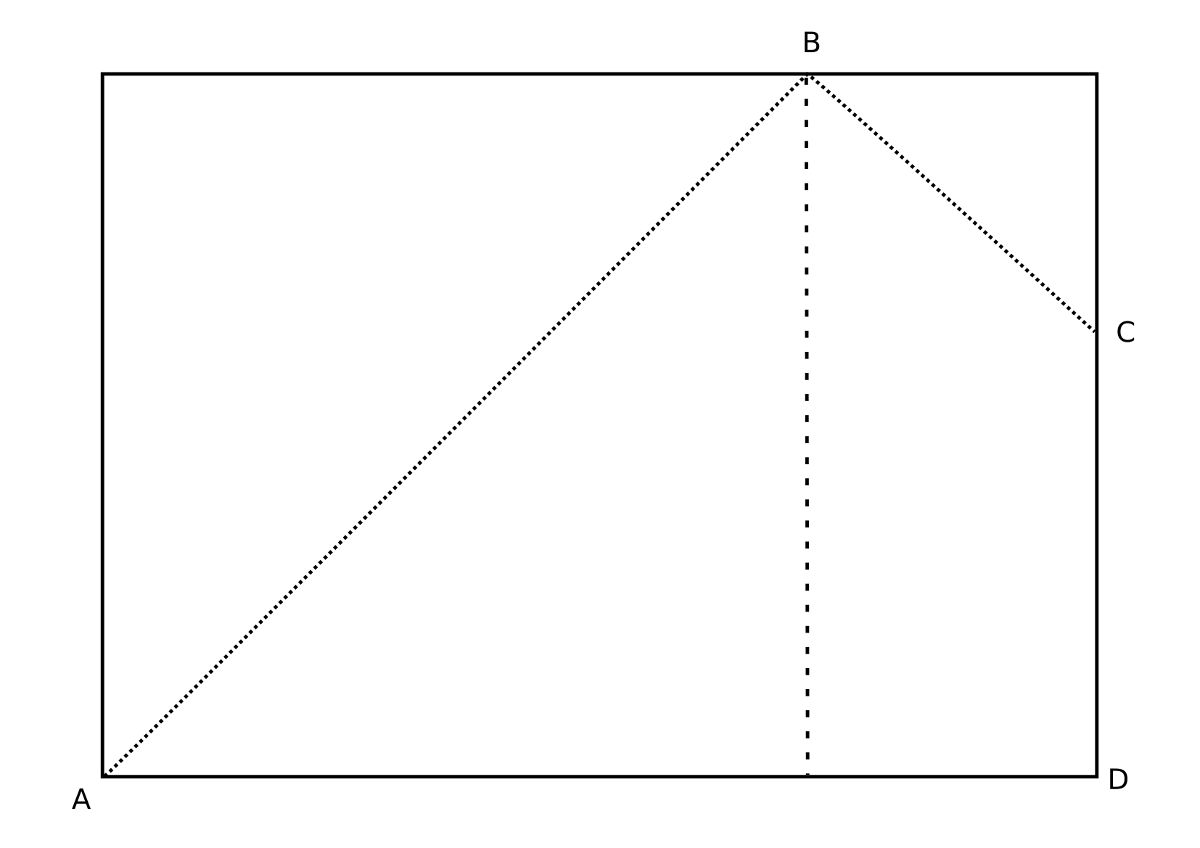
In all 50 states, it’s legal for second cousins to marry. So can third cousins, fourth cousins, and cousins of any higher degree.
Alex and Zelda are third cousins but cannot marry. Why? If they were not related, they would be perfectly eligible.

In all 50 states, it’s legal for second cousins to marry. So can third cousins, fourth cousins, and cousins of any higher degree.
Alex and Zelda are third cousins but cannot marry. Why? If they were not related, they would be perfectly eligible.

A curious chess puzzle by T.R. Dawson. White is to mate in four moves, with the stipulation that white men that are guarded may not move.
This seems immediately impossible. The two rooks guard one another, and one of them guards the king. And moving the pawn will place it under the king’s protection, leaving White completely frozen. How can he proceed?

A puzzle from Colin White’s Projectile Dynamics in Sport (2010): Suppose a billiard table has a length twice its width and that a rolling ball loses no energy to bounces or friction but simply caroms around the table forever. Call the angle between the launch direction and the long side of the table α. At what angle(s) should the ball be hit so that it will arrive back at the same point on the table and traveling in the same direction, so that its motion is cyclic, following the same path repeatedly?

Point E lies on segment AB, and point C lies on segment FG. The area of parallelogram ABCD is 20 square units. What’s the area of parallelogram EFGD?

A “maximummer-selfmate” by T.R. Dawson, from 1934. White wants to force Black to checkmate him, and Black always makes the geometrically longest move available to him. How can White accomplish his goal in three moves?

Another puzzle from Kendall and Thomas’ Mathematical Puzzles for the Connoisseur (1971):
Take three consecutive positive integers and cube them. Add up the digits in each of the three results, and add again until you’ve reached a single digit for each of the three numbers. For example:
463 = 97336; 9 + 7 + 3 + 3 + 6 = 28; 2 + 8 = 10; 1 + 0 = 1
473 = 103823; 1 + 0 + 3 + 8 + 2 + 3 = 17; 1 + 7 = 8
483 = 110592; 1 + 1 + 0 + 5 + 9 + 2 = 18; 1 + 8 = 9
Putting the three digits in ascending order will always give the result 189. Why?

A puzzle by Matt Parker of standupmaths:
The standard paper size A4 has dimensions in the ratio . Hold a piece of A4 paper horizontally, as shown, and fold down the top left corner to meet the other side, creating fold AB, as if you were going to make a paper square. Then fold down the top right corner to meet the edge of this 1 × 1 square (making fold BC).
The perimeter of the original sheet was . What is the perimeter of the folded shape (the quadrilateral ABCD above)?
I’ll honor Matt’s request not to reveal the answer, but here’s a clue: The shape ABCD is a kite. See Matt’s video for a more visual explanation and a non-spoilery way to tell whether you have the right answer.
(Thanks to Dave Lawrence for the tip and the diagram.)
A puzzle from P.M.H. Kendall and G.M. Thomas’ Mathematical Puzzles for the Connoisseur (1962):
Start with two containers, one holding green paint and the other an equal quantity of red paint.
Assume the paints are mixed thoroughly after each operation. If the two containers are now leveled off, without pouring any paint away, so that they both contain an equal quantity of paint, which pot is now more pure, the “green” paint or the “red”?

Computer science legend Donald Knuth offered this puzzle at the 29th International Puzzle Party in San Francisco in August 2009. It’s a partially completed Latin square: The challenge is to place letters in the remaining cells so that each row and column contains the same five letters and in the bottom row these spell a common English word. The solution is unique.